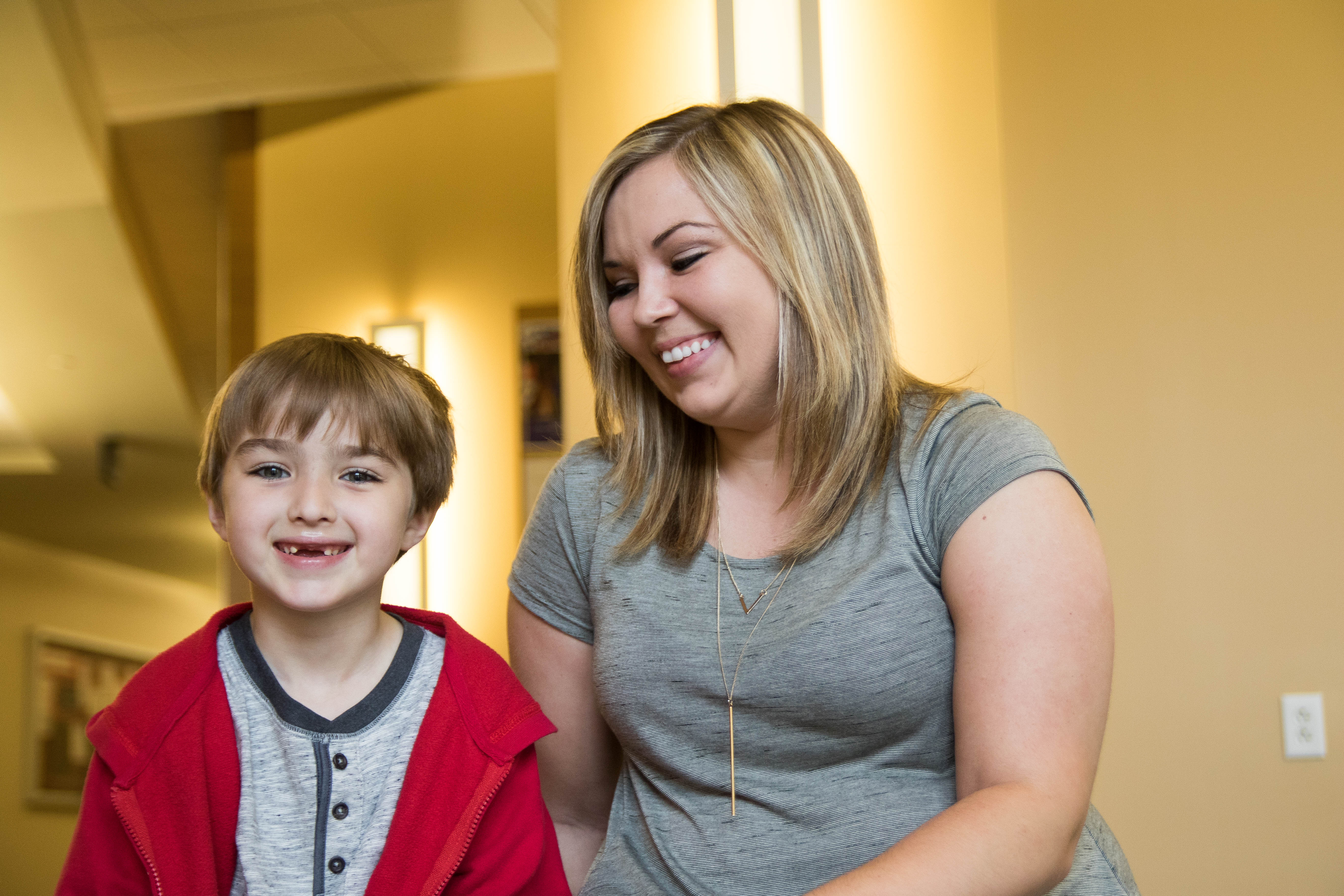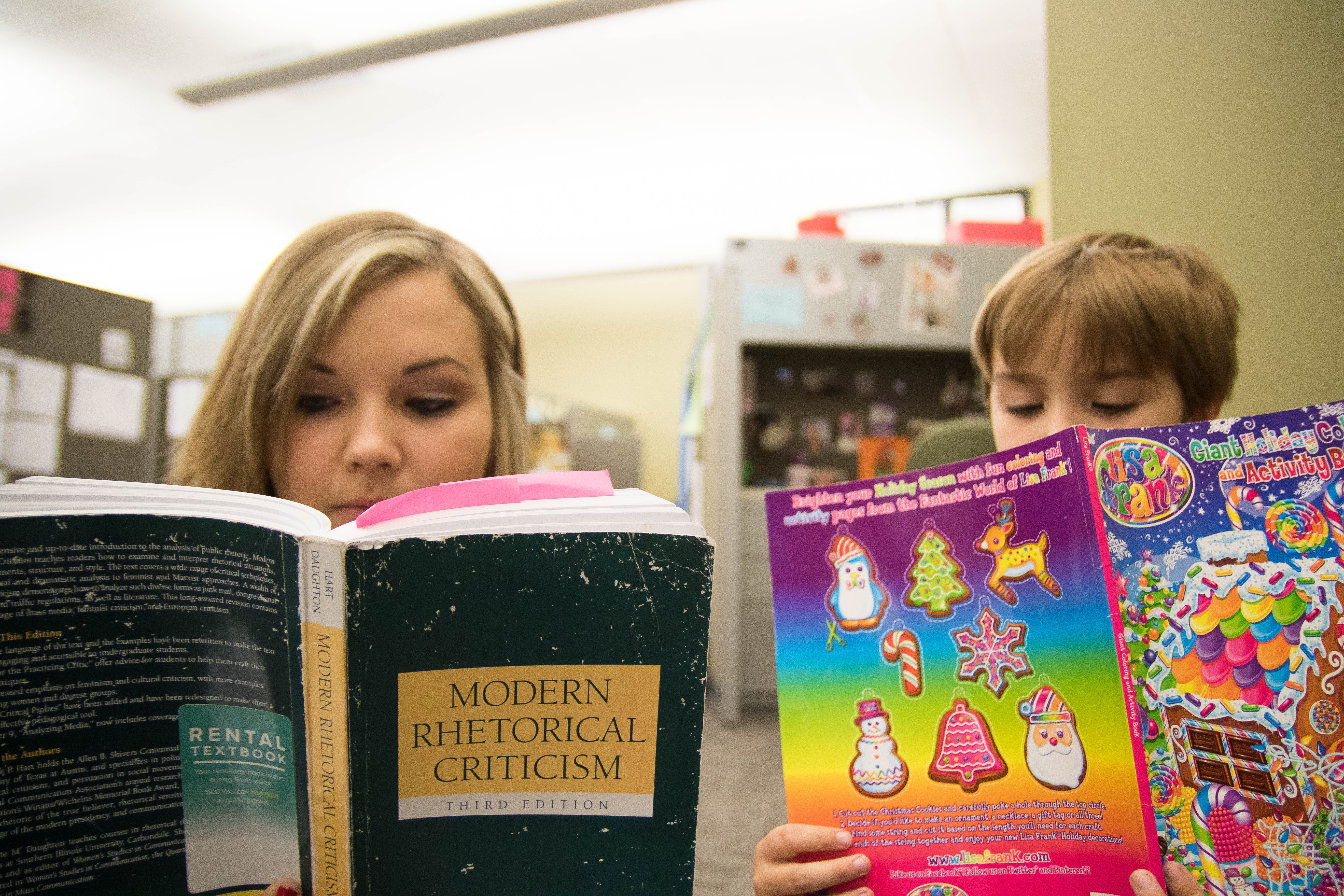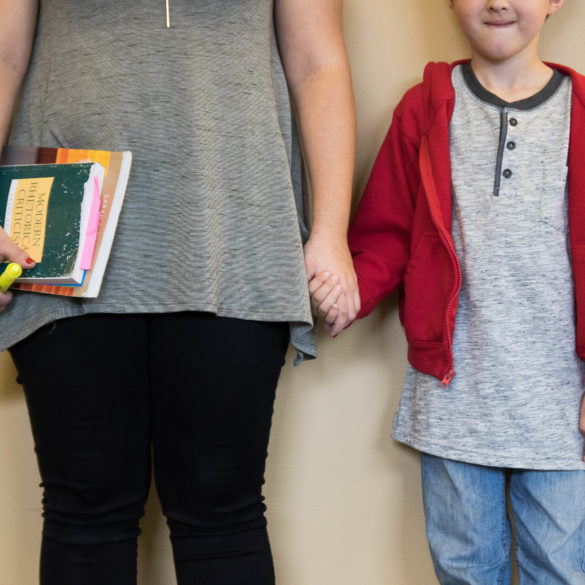A few months into her freshman year at Ball State, Sarah Loyd was sitting in her astronomy class joking around with a friend. Both had sex recently and their periods were late, so they were doing something many sets of female friends do in that situation: making pregnancy jokes.
Sarah’s constant need to pee was the butt of them – you’re so pregnant. The thought had crossed her mind, but she hadn’t taken the step to confirm or deny her suspicions until her friend brought it up.
After class, the two went to Walmart together to buy a test – they shared a two-pack. Sarah wasn’t sure what she was going to do if she really was pregnant. She had only just started college, only just begun her life independent from her parents, and now her life might change forever. A million thoughts were racing through her mind as she waited for her results, mostly centered around how different things soon might be.
A few minutes after taking the test, Sarah looked down to see two pink lines. She was pregnant.
Sarah’s case isn’t unusual. According to a study conducted by the Institute for Women’s Policy Research, IWPR, around 26 percent of college students are also juggling the responsibility of being a parent. That means that one in four college students have a lot more on their plate than homework and extracurriculars.
Students who have a child are more likely to struggle financially. Sixty-one percent of student parents aren’t able to contribute to their educational expenses at all, which poses a problem: how can they afford to have a child, while also paying for school?
For many of them, the answer often involves taking out more loans to help cover the costs, especially if they are parenting alone, which isn’t uncommon. Forty-three percent of student parents are single mothers and eleven percent are single fathers. While most college students already struggle with the high costs of tuition, food, and housing, these students also have the added cost of caring for their child.
As Sarah found out, daycare and rent aren’t cheap.

She takes out loans each year to help with these costs, which she can’t cover entirely on the stipend she receives from her graduate assistant position. She and her son, Kizer, live in one of the two-bedroom apartments on campus, which takes up a significant portion of her paycheck – the fewer rooms there are, the more an apartment tends to cost. She doesn’t have to worry about daycare costs anymore, since her son is almost seven and attends school. However, when he was younger, it was yet another thing she had to figure out how to pay for.
At first, her mother watched him for her, but after she had a stroke, she could no longer care for him. When he was a few years old, Sarah had to look elsewhere for care, eventually settling on a day care in Newcastle. According to IWPR, a student mother’s debt after one year of graduation from an undergraduate program is, on average, $3,800 more than a female without children. It’s also nearly $5,000 more than a male student without children. Average student debt – $28,950 according to the Institute for College Access and Success – is already high without the extra cost raising a child adds to it.
There’s also another road-bump to think about: most universities are geared toward the traditional student, leaving some student parents to feel as though they aren’t fully involved in the atmosphere of college life. Activities aren’t always open to children, leaving students like Sarah to feel left out and unsupported.
One event that is family-friendly is the Late Nite Carnival, an annual event that has several rides and activities that are open to the public. When her son was a few years old, Sarah thought that it would be fun to take him to the carnival. He wasn’t old enough to ride any of the rides, but she thought he’d enjoy walking around and getting his face painted. After all, it is an event open to the public, so many families in the community attend.
One of the opportunities given to students for this event is early admittance – but only for Ball State students. Sarah grabbed her tickets in advance and joined the line that day with all of the other students, her son in tow. She was glad that they could get in an hour early, because that meant getting home sooner, and getting her son to bed earlier.
When she got to the front of the line, her plans were wrecked.
Because her son wasn’t a student, even though she was, they were turned away and told to come back when it was time for general admission.
This is a problem that occurs with other events and activities hosted by Ball State, as well. Since Ball State is more geared toward traditional students, some activities are not family-friendly, like the movies played every Friday night in Pruis Hall. Sarah also can’t bring her son to see any of those showings, because in order to go, the guest of the student has to be at least 16 years old.
Because of this and similar experiences she had up until then, like not feeling as though there was enough help for her during her pregnancy, Sarah began to feel like there just wasn’t enough support for students like her.
While she did feel as though her department, communications, was supportive and helpful with her situation, she felt like the university as a whole might not provide enough assistance and resources.
When she first learned she was pregnant, Sarah went to the Health Center, primarily to get a second test done to make sure the first was accurate. They were able to confirm the pregnancy, and then they laid out her options for her, as far as what she was able to do at that point: abortion, adoption, and keeping the baby. That’s as far as they were able to go.
When Sarah decided she was going to keep her child and raise it, she tried going to the counseling center on campus for help. Students get twelve free counseling sessions, and although she wasn’t sure if they’d be able to provide her any resources, she thought it would be worth a shot. She was trying to find help anywhere she could.
What she discovered, though, was that they didn’t know how to get her the help that she needed at the time. They asked her how she was feeling about the pregnancy, trying to provide emotional help, but they couldn’t offer the resources she was looking for. She wanted to know how she could continue to be a student while also being a good parent. However, that wasn’t something they could help her with. Since they were unable to provide her with that she needed, she had to turn to friends and family for advice.
Something that’s usually not known on college campuses is that under Title IX, a law that deals with discrimination in education based on sex, pregnant students can be allowed certain accommodations when medically necessary. This is something that could have been helpful to Sarah in her search for resources in the beginning.
Katie Slabaugh is responsible for talking to students in those situations at Ball State, since she’s the assistant dean of students and Title IX coordinator. What she’s able to help these students with isn’t widely known, which is something she’s aware of. Most of the students who come to her find out about the existence of Title IX through professors who email her after the students come to them.
Title IX can only do so much for these students, though. For one thing, it only covers accommodations that are medically necessary. This can be something like excusing absences or being given a seat in a class which normally requires long hours of standing. It essentially allows them to continue, if they want, without having to worry about their situation causing academic problems. It also only covers them during the pregnancy and immediately after the birth of the child. Afterward, the students need to find other means to work through their situations.
What Katie recommends most to these students is simply communicating with their professors. Most of them are willing to work with students if they know about special circumstances from the start, so she thinks it’s best to have a talk with them about concerns and needs in the beginning and go from there. It’s much easier for professors to work with students in these situations if they’ve been aware of the possibility of assistance being needed beforehand, rather than having it dropped on them out of nowhere.
This is mostly how Sarah handled her situation, and she found most of the people in her department to be helpful and supportive. She didn’t run into many problems concerning her classes.
Although Sarah didn’t take her son there after he was born, Ball State does have a child care center open to students and faculty for a cost. This is one of the resources that David Chalfant, the adult focus academic advisor at Ball State, said is available and could help make things easier for nontraditional students, which is the type of student he typically works with.
Although not every student parent is nontraditional, which Ball State defines as being 23 or older and entering college for the first time, some are. Ball State is more focused toward the needs of traditional students, but there are some programs and options available to nontraditional students which make it easier for them to complete their degree.
Things like the learning center, the option to take online or night classes, and also recreation passes for dependents of students to be able to use the rec center are available. However, most of these resources are available to all students – there isn’t a lot offered specifically with the needs of student parents in mind.
Even with these few resources available, there are still areas to be improved. Ball State is not the only institution lacking in support for these students, which is why IWPR created the Student Parent Success Initiative. Their goal with this project is to raise awareness, in both institutional leaders and policymakers, about the needs of student parents and how they can better support them. In doing so, graduation rates would increase, which would be beneficial for student parents, their families, and the universities.
IWPR defined childcare as being a problem area all around in postsecondary institutions. Even when it’s available, it might not be affordable, which is how Sarah felt about the options offered at Ball State. If cost is not a factor, space is usually limited. According to IWPR, there’s only one space available for every ten students who need one.
Because caring for their children is typically a top priority for student parents, a lack of support in that area is a problem. Without that support, it’s more difficult for them to stay in school.

Not everyone is able to handle juggling parental, student, and work responsibilities at the same time. However, Sarah was and still is. She finished her undergraduate degree and then returned to Ball State this year for graduate school.
Throughout coming to terms with being a parent, watching her son grow to nearly seven years old, and entering graduate school, there is still one thing that Sarah felt was lacking: a community she belonged to. She didn’t feel like a normal college student. There wasn’t a group or anything similar where she and other student parents could meet to talk about what was going on, or share ideas and advice.
She feels this would have been beneficial not only for herself, but students like her. She wishes a community for student parents existed at Ball State but also recognizes that as a student with that desire, she or someone like her will have to be the one to make that move. Organizations on campus are student-run, and to make a new one, a student just has to fill out a few forms with the Office of Student Life. No one else can make it happen.
However, Sarah also wishes this wasn’t the case. She’s already busy with graduate work – both from the classes she teaches and the ones she takes – and her son, so she doesn’t have time to manage an organization. Sarah believes this is why nothing has been created. Other student parents aren’t any less busy, and no one has the time to take that sort of initiative. She still hopes something will be created, but also thinks the support might need to come from somewhere else.
Katie and Dave both agree that support for student parents is probably an area that could use some improvement, but it isn’t necessarily an attainable goal. Since being a student parent is such an individualized situation, with no two students being the same or having the same needs, it would be hard to standardize support in that way. This is why talking about their needs with their professors is the best option for students in that situation.
Communication is key in any sort of situation, but it is especially important with regard to being flexible and understanding in situations student parents might find themselves in. When Sarah needed help with her own life as a student parent, she found this to be true. The communications department as a whole was very supportive and helpful – as long as she communicated her needs to them.
When Sarah chose to come back to Ball State for grad school, she knew that support would continue because she stayed within the communications department – they were really good with working with her schedule before, and she knew they’d continue to be. Although it would still be hard to juggle school, work, and being a parent, she felt like it would be easier this time, considering Kizer was older and daycare was no longer a concern.
And it is. Because he’s almost seven, he attends school, which means she doesn’t have to find someone to take care of him while she’s in class. She wakes him up in the morning, gets him ready, makes him breakfast, and then walks or drives him to school, depending on the weather. She then returns to her apartment, gets herself ready for the day, and comes to campus to teach. Sometimes, when no one else can watch him, she brings him to some of the later classes she teaches or attends – he’s quiet, and it’s never an issue.
Although Sarah didn’t drop out of school, and is now working on furthering her education, she knows some people who didn’t follow the same path. Schoolwork, jobs, and finding the time to play with and care for their children became too much, and they had to quit one of them. This is why support for students like Sarah is so important. Without that kind of support, the already difficult task of juggling responsibilities becomes even harder, leaving them to feel like leaving school may be their only option.




